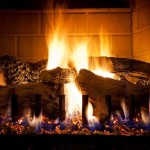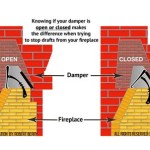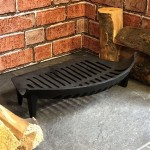Understanding Wood Gas Fireplaces: Efficiency and Environmental Considerations
Wood gas fireplaces represent a modern approach to traditional wood burning, designed to optimize combustion and reduce emissions. These fireplaces utilize a process known as wood gasification, which transforms solid wood fuel into a combustible gas. This gas is then burned, providing heat in a more controlled and cleaner manner compared to conventional wood-burning fireplaces.
The increased efficiency and decreased environmental impact of wood gas fireplaces make them an attractive alternative for homeowners seeking to enjoy the ambiance of a wood fire while minimizing pollution. However, understanding the technology, operational considerations, and maintenance requirements is crucial for informed decision-making.
This article will delve into the mechanics of wood gas fireplaces, exploring their advantages, disadvantages, and practical considerations for installation and use.
The Process of Wood Gasification
Wood gasification is a thermochemical conversion process that transforms solid biomass, such as wood, into a gas mixture called wood gas, also known as producer gas. This process involves partial combustion of the wood at high temperatures in a controlled environment with limited oxygen. The partial combustion creates a series of reactions that break down the wood into its constituent components.
The gasification process typically occurs in several stages. First, the wood is dried by the heat within the gasifier. Next, pyrolysis takes place, where the wood is heated in the absence of oxygen, causing it to decompose into volatile gases and char. The volatile gases consist primarily of hydrogen (H2), carbon monoxide (CO), methane (CH4), and various other hydrocarbons. The char, which is essentially carbon, remains behind.
In the oxidation zone, the char reacts with the limited oxygen present to produce carbon dioxide (CO2) and more heat. This heat then sustains the pyrolysis process. Finally, in the reduction zone, the CO2 and water vapor react with the remaining char to produce more CO and H2. The resulting wood gas mixture is then channeled through the appropriate pathways in the fireplace to be burned in a controlled and efficient manner.
The key to efficient wood gasification lies in controlling the temperature, oxygen levels, and residence time of the wood within the gasifier. Optimizing these parameters ensures a complete conversion of the wood into gas, minimizing the production of soot, creosote, and other particulate matter.
Advantages of Wood Gas Fireplaces
Wood gas fireplaces offer several significant advantages over traditional wood-burning fireplaces. These advantages stem primarily from the more complete and controlled combustion process that wood gasification facilitates.
One of the most notable benefits is increased efficiency. Traditional fireplaces typically have efficiency ratings between 10% and 30%, meaning that a significant portion of the heat generated is lost up the chimney. Wood gas fireplaces, on the other hand, can achieve efficiency ratings of 70% or higher. This higher efficiency translates to more heat output per unit of wood consumed, reducing fuel costs and resource consumption.
Another key advantage is reduced emissions. The complete combustion of wood gas results in significantly lower levels of smoke, particulate matter, and carbon monoxide emissions compared to traditional wood burning. This reduced emission profile makes wood gas fireplaces a more environmentally friendly option and can also improve indoor air quality. Many wood gas fireplaces meet or exceed EPA emission standards for wood-burning appliances.
Furthermore, wood gas fireplaces often offer greater control over the burning process. Some models feature adjustable air controls and thermostatic settings that allow the user to regulate the heat output and burn rate. This control can contribute to more consistent and comfortable heating.
Finally, some wood gas fireplaces are designed with features like catalytic combustors or secondary combustion chambers that further reduce emissions and improve efficiency. These features ensure that any remaining unburned gases are ignited, minimizing the release of harmful pollutants into the atmosphere.
Disadvantages and Considerations
Despite their advantages, wood gas fireplaces also have certain disadvantages and considerations that homeowners should be aware of before making a purchase.
One potential drawback is the upfront cost. Wood gas fireplaces typically have a higher initial purchase price compared to traditional wood-burning fireplaces. This higher cost reflects the more complex design and advanced technology involved in wood gasification.
Installation can also be a factor. While some wood gas fireplaces can be installed as freestanding units, others may require professional installation, especially if they are being integrated into an existing chimney system. Ensuring proper venting and adherence to local building codes is crucial for safe and efficient operation.
Maintenance is another important consideration. Wood gas fireplaces require regular cleaning and maintenance to ensure optimal performance. This may involve removing ash, cleaning the combustion chamber, and inspecting the venting system for obstructions. Some models may also require periodic replacement of certain components, such as catalytic combustors.
The type of wood burned can also impact the performance and efficiency of a wood gas fireplace. Seasoned hardwood is generally recommended, as it burns cleaner and produces more heat than softwood. Avoid burning treated wood, painted wood, or other materials that can release harmful chemicals into the air.
Finally, it is important to consider the availability of wood fuel. Wood gas fireplaces require a consistent supply of wood, which may not be readily available in all areas. Homeowners should assess the accessibility and cost of wood fuel before committing to a wood gas fireplace.
Overall, wood gas fireplaces present a technologically advanced and environmentally conscious alternative to traditional wood-burning options. Their efficient combustion and reduced emissions offer distinct advantages for homeowners seeking a cleaner and more sustainable heating solution. However, careful consideration of the costs, installation requirements, maintenance needs, and available fuel sources is essential before making a decision.

Fireplaces Inserts Wood Gas Fireplace Xtrordinair

Wood Fireplaces Gas Conversion That Counts

Gas Vs Wood Fireplaces Gaithersburg Md Fireplace Service

Pros And Cons Of Gas Wood Electric Fireplaces Tripod International

Can A Wood Burning Fireplace Be Converted To Gas The Flame Company

Gas Electric Wood Burning Fireplaces Anderson Fireplace

Should You Convert Your Cabin Fireplace From Wood To Gas

Wood Mantel And Surround For Corner Gas Fireplace Fireplaces

Gas Fireplaces Toronto Zoroast The Fireplace

Estimated Page Fireplaces Stoves Inserts Wood Gas Pellet








